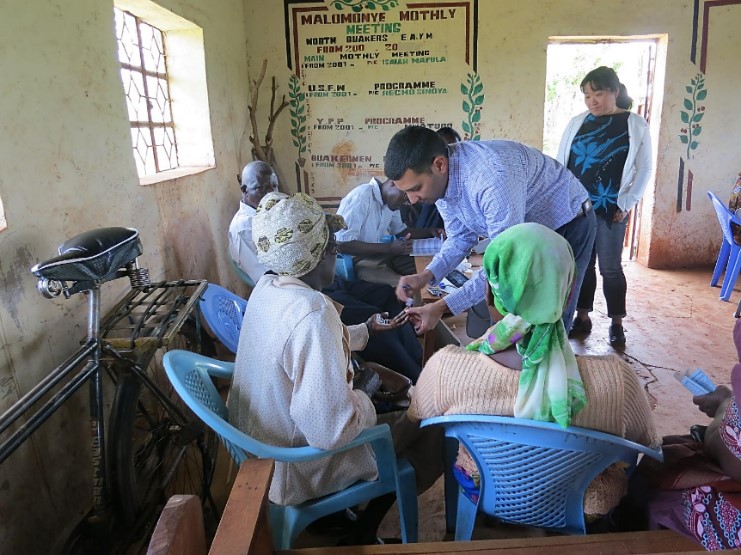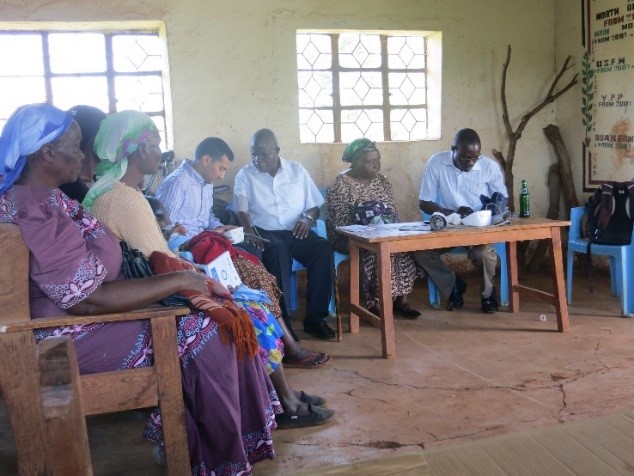Cell-phone Based Detection of HIV Drug Resistance
Purdue Collaborator: School of Chemical Engineering


The Challenge: Point-of-care Detection of Resistance to HIV Drugs
The large number of people infected with HIV in the developing world puts an enormous burden on the health system. Infected patients, which now have global access to antiretroviral therapy, require constant disease management and regular visits to clinics. This burden creates a great challenge in low-resource areas with a limited number of trained medical personnel and constrained diagnostic and monitoring methods. A consequence of such limited resources and restricted monitoring of therapy is the development of drug resistance, a major hurdle to HIV patient care worldwide. A point-of-care tool that enables rapid detection of HIV drug resistance mutations is of pressing need to meet the increasing health-care demand in developing countries.
An HIV drug resistance assay is a crucial part of HIV management and typically requires reverse transcription (RT)-PCR followed by PCR amplification. Two assays, TRUEGENE (Siemens Medical Solutions) and ViroSeq (Celera) have been approved by the FDA and are routinely used in developed countries for patient care and regimen selection1. These assays, however, require expensive instrumentation and reagents, extensive experience in sample handling, and a relatively lengthy testing time. They are thus not suitable for point-of-care (POC) applications. There is a pressing need to develop a genotypic assay that can be used to rapidly and in real time determine HIV drug resistance.
The Purdue Innovation: Cell-phone Based Detection of HIV Drug Resistance
The team is developing a cellphone-based detection device for HIV drug resistance. This includes a sensing component that primarily consists of a biological sensor that can be programmed to recognize a specific mutation-containing gene fragment with high selectivity. Signal transduction will be achieved via highly sensitive fluorescent dyes. The sensor will be integrated with a coverslip-based or lateral-flow device. Changes in colorimetric signals will be captured and quantified using a cell-phone camera and an imaging processing App, respectively. The developed sensing platform will enable an on-site drug resistance detection assay suitable for low-resource areas. Compared with emerging point-of-care genotypic assays, our detection platform is advantageous in that it can be completed in less than 90 minutes, requires minimum sample processing, and can be carried out by less skilled medical workers.

Fig. 1: A schematic drawing of the detection mechanism of the proposed HIV genotype detector (the mutation of interest will be located primarily in the middle position of each detecting arm).
The Partners:
Purdue University, Brown University, AMPATH
- Chongli Yuan, Associate Professor of Chemical Engineering, Purdue University, , cyuan@purdue.edu
- Julie Liu, Associate Professor of Chemical Engineering, Purdue University, julieliu@purdue.edu
- Rami Kantor, Associate Professor of Medicine and Director of Research for the Brown-Kenya Program, Brown University, Rami_Kantor@brown.edu
- David Plater, Program Manager (North America) AMPATH Research Network & Research Program Office, Regenstrief Institute, dplater@regenstrief.org
- Adrian Gardner, Assistant Professor of Clinical Medicine; Stephanie and Craig Brater Scholar in Global Health, Indiana University, and Executive Field Director, AMPATH Consortium, gardner5@iu.edu
